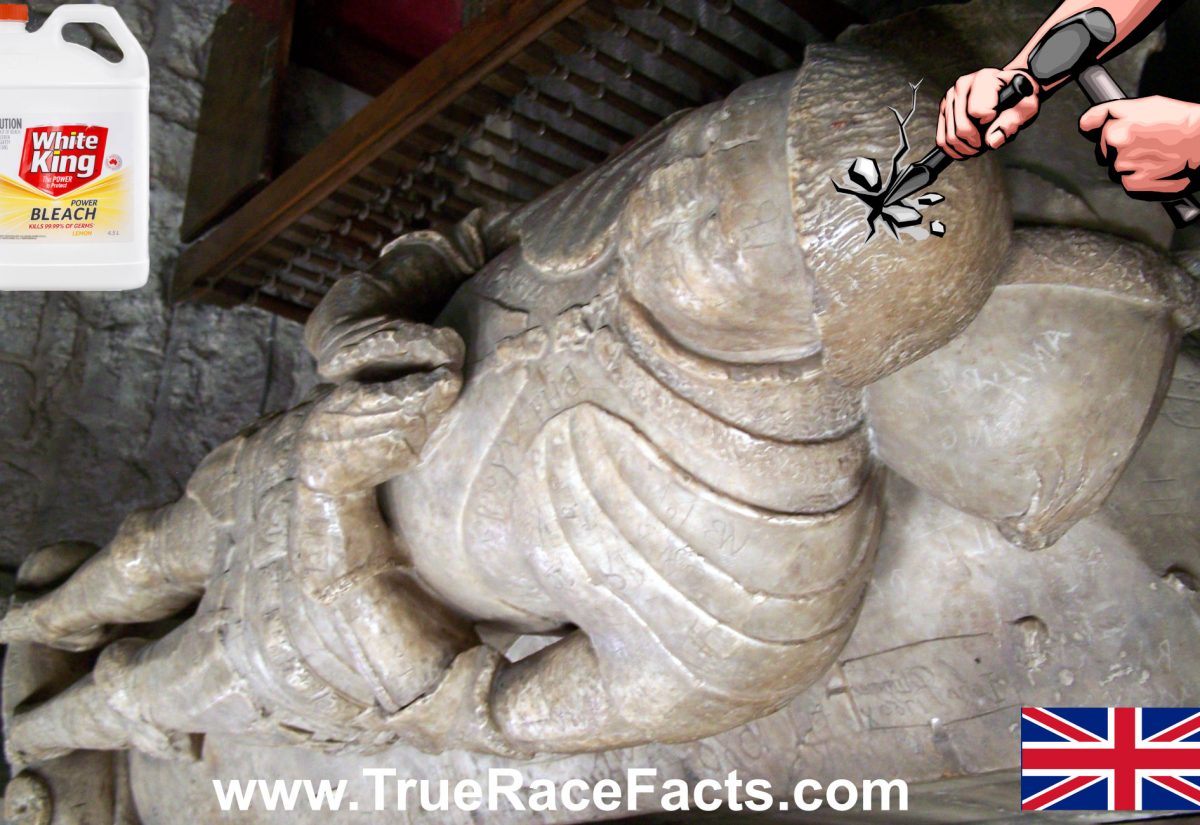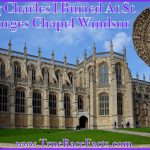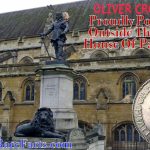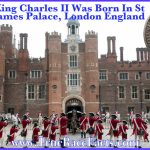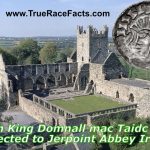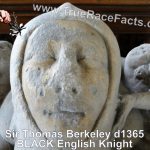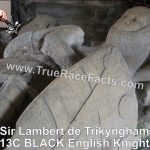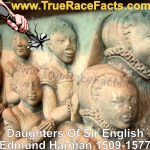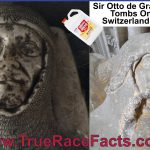14th Century English Anglo-Saxon Knight Sir Robert Fraunceys / Franceys Lord of Foremark
- Guinevere Jackson
- 24 November 2022
- 0 Comment
The destroyed alabaster effigy of a recumbent knight in armour lying on a tomb chest. At one time, it surmounted an altar tomb at the East end of the north aisle, but in 1792 the tomb was broken up, and the effigy was laid on bricks in the crypt and moved to its present position by the crypt stairway in 1911. It has suffered extensive graffiti, probably at the hands of racists trying to destroy his facial features that would identify the nobleman as a dark-skinned so-called BLACK man. Notice the nose is intentionally sawed off carefully, but it does not hide his phenotype.
The monument has been thought to represent Sir Robert Fraunceys, aka Franceys Lord of Foremark, who settled at Foremark towards the end of the 14th century. However, the ‘suns and roses’ collar with a pendant of the Lion of March indicates support for the House of York during the Wars of the Roses; Sir Robert died in 1420, long before a widespread Yorkist faction had developed, and decades before the Yorkist accession to the throne. Sir Robert’s son was a more likely candidate, who died about 1463, but the Lion of March pendant would be an extremely early example.
The Church of St Wystan is located at Repton in Derbyshire on elevated ground overlooking the floodplain of the River Trent. The site is of exceptional Anglo-Saxon interest, and a significant amount of the Anglo-Saxon fabric survives intact in the present-day Church of St Wystan, and a perfectly preserved early eighth-century crypt survives intact beneath the chancel. The monastery was probably founded bewteen 675 and 692. From the Vita Sancti Guthlaci ‘The Life of St Guthlac’ (chapter XX) we know that a monastery existed at Repton in the late seventh-century, and that it was a double-house under the governance of an abbess. St Guthlac received his monastic training at Repton according to the Vita. Recent archaeological excavation has found traces of timber buildings on the site, and these were probably the earliest monastic buildings.
Repton was a royal monastery located in the Anglo-Saxon kingdom of Merica near the political centre of Tamworth. Repton was the original bishopric see of Mercia, but this was later moved to Lichfield. The site at Repton was probably a daughter-house of Medeshamstede (modern Peterborough).
A significant amount of the Anglo-Saxon building is preserved in the present-day church, especialy in the east end. Perhaps the most spectacular preservation is the Anglo-Saxon crypt. The crypt is one of the best preserved examples of its kind in England, and it was a royal masoleum. It was probably built during the reign of Aethelbald of Merica (c. 716-757). Aethelbald was murdered nearby at Seckington, and was afterwards interred in the crypt at Repton. A fragment of a free-standing cross found in the churchyard at Repton displaying on one side an armoured warrior or aristocrat on horseback with sword and shield is thought to be a representation of King Aethelbald. The original Repton Stone is now housed at the Derby Museum. The Crypt at Repton became the resting-site for Mercian royal members, and some notable interments in Repton crypt include Wyglaf, king of Mercia (c. 827-840) and his grandson, prince Wystan who was murdered in 849, from whom the site has acquired its present name. Following Wystan’s murder due to internal rivalries in 849, he was elevated to the status of a saint, and Repton became his cult-site. The small door leading into the crypt from the exterior was probably the place where pilgrims could come to visit the remains of St Wystan.
Also, in 873/4 Repton was where a Viking party wintered, and this has been ascertained by archaeological excavation, which unearthed a mass grave dating to the period. The area around the church may have been used by the Vikings because it commanded a direct view of the River Trent and the floodplain below.
The earth is given into the hand of the wicked: he covereth the faces of the judges thereof; if not, where, and who is he?
Job 9:24 KJV
Article Citation: Kelly A. Kilpatrick, “Church of St Wystan, Repton, Derbyshire,” Woruldhord, accessed November 24, 2022, http://poppy.nsms.ox.ac.uk/woruldhord/items/show/142. Images jmc4 – Church Explorer – Flickr. https://raggedramblers.blogspot.com/2013/08/st-wystans-church-crypt-repton.html – Creative Commons Attribution-NonCommercial-ShareAlike 4.0 International (CC BY-NC-SA 4.0)
Disclaimer: True Race Facts have made the long overdue honest determination that the King was dark brown, aka BLACK of the Hebrew, Shemitic negro race. Based on his facial phenotype, lips and thick braided hairstyle. Authentic original coins are the most accurate determination to identify the King because he would have approved the coins before they were hammered and issued. There are many ancient FAKE coins on the market, so beware when looking at coins. The deceivers made it their mission to cover up the dark ages, so even history should now be considered pseudo-history.


